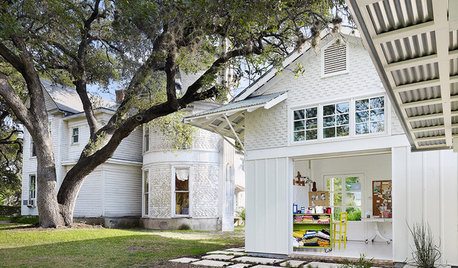Confused by Sylvania fluorescent...
Vero
18 years ago
Related Stories

HOUSEPLANTSMeet a Palm That's Fine With Fluorescent Light
Get the look of the tropics without the full-on sun and high humidity — parlor palm tolerates regular indoor conditions with aplomb
Full Story
LIGHTINGBask in Lamplight's Comfort This Season
Get pro insight on lamp styles, shades and ever-confusing bulbs to enjoy the benefits of lamplight on long, cold nights
Full Story
KITCHEN DESIGN3 Steps to Choosing Kitchen Finishes Wisely
Lost your way in the field of options for countertop and cabinet finishes? This advice will put your kitchen renovation back on track
Full Story
LIGHTINGWhat to Know About Switching to LED Lightbulbs
If you’ve been thinking about changing over to LEDs but aren't sure how to do it and which to buy, this story is for you
Full Story
LIGHTING5 Questions to Ask for the Best Room Lighting
Get your overhead, task and accent lighting right for decorative beauty, less eyestrain and a focus exactly where you want
Full Story
LIGHTINGThe Lowdown on High-Efficiency LED Lighting
Learn about LED tapes, ropes, pucks and more to create a flexible and energy-efficient lighting design that looks great
Full Story
COLORWant Gorgeous Interior Colors? Look to the Light
See how to manipulate natural and artificial light — and learn about those baffling new bulbs — to get the exact room colors you want
Full Story
KITCHEN DESIGNKitchen Confidential: 9 Trends to Watch for in 2016
Two top interior designers share their predictions for the coming year
Full Story
STUDIOS AND WORKSHOPSGet Ideas for a Model-of-Perfection Artist's Studio
From covetable northern light to ample supply storage, an architect considers what makes an artist's studio idyllic
Full Story
LIGHTINGGet Your Home's Recessed Lighting Right
Learn the formula for how much light a room needs plus how to space downlights, use dimmers and more
Full StoryMore Discussions






dmarin
zink
Related Professionals
Mountain Brook Landscape Architects & Landscape Designers · Owings Mills Landscape Architects & Landscape Designers · Norwood Landscape Contractors · Dinuba Landscape Contractors · Eureka Landscape Contractors · Hilton Head Island Landscape Contractors · Shoreview Landscape Contractors · Whitehall Landscape Contractors · Greenfield Landscape Contractors · Maple Heights Landscape Contractors · Hutto Fence Contractors · Markham Fence Contractors · Oceanside Fence Contractors · Park Ridge Fence Contractors · Hermosa Beach Fence ContractorsVeroOriginal Author
zink
VeroOriginal Author
shrubs_n_bulbs
knightlite